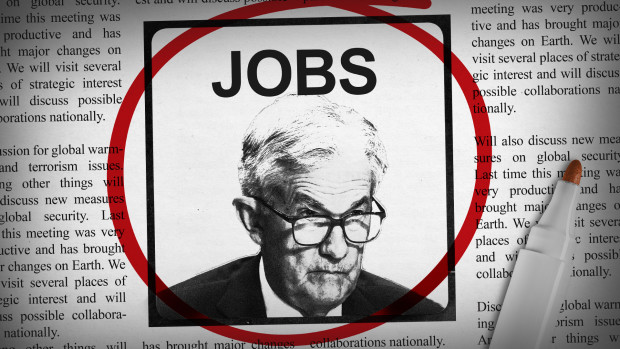
If you’re still betting on the Federal Reserve to change its course when it comes to hiking rates into the end of 2023, you may want to give this latest jobs report a closer look.
The June jobs report proved to be the weakest since December 2012 with the Bureau of Labor Statistics reporting 209,000 non-farm payrolls and revising May and April results lower.
While this is certainly the kind of result the central bank has been looking for, market technician and long-time Fed watcher Bob Lang told Action Alerts PLUS subscribers there was nothing in that report to signal the Fed will stop hiking and start cutting rates any time soon.
In the video above, Lang explained how the report may show the Fed is inching closer to a soft landing for the U.S. economy, it it continues on its current trajectory.
Full Video Transcript Below:
J.D. DURKIN: Despite the stronger-than-expected ADP report out earlier this week, the Bureau of Labor Statistics reported 209,000 non-farm payrolls only for the month of June. Considering the pretty hawkish FOMC minutes, Bob, that we got a few days ago, what does this latest piece of the economic puzzle actually mean for the Fed?
BOB LANG: Well, it's an important piece for the Fed, J.D. It's basically an in-line report that showed that job growth was far less than what the ADP was looking for. I think the ADP was looking for more than double what the actual number came out with for non-farm payrolls. Now remember, this is an estimate. And the ADP number is an estimate as well, too.
The fact that the report came in far less than the ADP shows that maybe the economy is just humming along and not really in that bad of shape right now. However, on the flip side of that, the Fed is paying very, very close attention to the inflation numbers, and specifically average hourly earnings, which were up 4.4% year over year. The main number was revised upwards to 4.4%. So basically, average hourly earnings were flat month over month on a year over year basis.
So I think that this is going to be a concern going forward for the Fed. I don't think there was anything in this report that said that the Fed was going to be slowing down on interest rate hikes, nor are they going to suggest that rate cuts are going to be coming in the near future. So I think they're going to keep the pressure on, keep the pedal to the metal until they have some resolve with inflation.
JD DURKIN: I mean, does this give you confidence that maybe the Fed is actually closer than previously expected to, dare I say, pulling off a bit of a soft landing when you see a number coming in at only 209, which I should say, I mean, historically speaking, that's a fine number. Any White House would celebrate 209. But in the context of the last year of change or so, it's a lot lower than people had been expecting.
BOB LANG: I think you're absolutely 100% correct, J.D. I think that the Fed is coming close to pulling off this number. And listen, you know what? Better to be lucky than good sometimes. And I think the Fed is lucking out here with a strong jobs report and a strong jobs market for the past year, year and a half.
There's been nobody on the Federal Reserve who's been able to explain the strong jobs report with any good sensibility here. So I think that a strong jobs report is certainly going to help the Fed's case and their argument in trying to lead the economy down to a soft landing. So I certainly agree with you 100% that that's the case right here.
JD DURKIN: Bob, you've been doing a great job telling our members for quite a while now. These reports are lagging indicators. They don't necessarily fully reflect the current landscape of employment. Do today's numbers update that thinking for you at all?
BOB LANG: No, not at all. And remember something, that these numbers are just estimates. And they are surveys and estimates and so forth. And they get revised a year or two later to a more permanent number.
So these are not like earnings, which come out from companies. And those are hard numbers. This is not hard data. This is actually soft data. But it's a good preview of what the economy is going to look like with the employment situation.
So I think that if the economy is going to be slowing down, we won't see those reports until probably later on this year, possibly October, November, or December. We did see a slight miss on the jobs report today, which was less than what we had last month. So maybe that's starting to take hold right now, J.D.
So I don't think that this number really represents what's happening in the economy right now. It's going to be more representative of what's happening six to eight months out from here.







